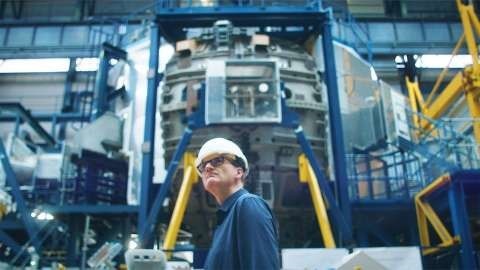As part of a collaboration with Intel and Dell Technologies, the United Kingdom Atomic Energy Authority (UKAEA) and the Cambridge Open Zettascale Lab plan to build a "digital twin" of the Spherical Tokamak for Energy Production (STEP) prototype fusion power plant. The UKAEA will utilize the lab's supercomputer based on Intel technologies, including 4th Gen Intel® Xeon® Scalable processors, distributed asynchronous object storage (DAOS) and oneAPI tools to streamline the development and delivery of fusion energy to the grid in the 2040s.

"Planning for the commercialization of fusion power requires organizations like UKAEA to utilize extreme amounts of computational resources and artificial intelligence for simulations. These HPC workloads may be performed using a variety of different architectures, which is why open software solutions that optimize performance needs can lend portability to code that isn't available in closed, proprietary systems. Overall, advanced hardware and software can make the journey to commercial fusion power lower risk and accelerated - a key benefit on the path to sustainable energy."
-Adam Roe, Intel EMEA HPC technical director
Why It Matters:
Fusion energy, with its potential to provide near limitless and highly sustainable energy, is often heralded as the ultimate alternative power source, but a functioning fusion power plant that can deliver energy to the grid is still years away. Engineering a new breed of power plant requires a lot of advanced tools and massive amounts of modeling and simulations, all while fusion research and technology continue to advance.
As they work toward the functioning fusion facility, UKAEA and the Cambridge Open Zettascale Lab will use supercomputing and a "digital twin," or prototype, of the STEP machine design to accelerate engineering and help future-proof progress, even as things evolve.
"I firmly believe the future of sustainable energy will rely upon supercomputing," said Rob Akers, director of Computing Programmes, UKAEA. "The world has an urgent need to provide energy security and combat climate change. This is a journey we must embark upon together, delivering access and capability to all those who will be instrumental in delivering commercial fusion energy."
How It Works:
Working inside the industrial metaverse - a digital representation of an industrial environment that people can interact with - the UKAEA team can adapt their design as new information becomes available and technologies are developed. The supercomputer at the Cambridge Open Zettascale Lab leverages Dell PowerEdge servers based on 4th Gen Xeon processors to run the massive amounts of modeling and simulations needed for fusion research.
oneAPI, which allows developers to use a single codebase to deploy applications across multiple architectures, addresses one of the biggest inhibitors of simulation functionality and performance: code portability. Intel oneAPI tools and optimized AI frameworks deliver performance for deep learning and molecular dynamics. As a oneAPI Center of Excellence, the Cambridge Open Zettascale Lab is focused on broadening this application set to include engineering, fusion materials and plasma simulation.
Storage speed is another potential roadblock in fusion research, which involves large simulations running across thousands of graphics processing unit nodes and then transferring a huge amount of data for fast post-simulation analysis. A single plasma turbulence simulation can output hundreds of petabytes of data in a very short window. Intel DAOS is an open source, software-defined, scale-out object store that provides high bandwidth, low latency and high I/O operations per second (IOPS) storage containers for high performance computing (HPC) applications. For fusion research, it offers a fast and frictionless pathway for analysis and calculations that need to happen in an incredibly small window of time.




